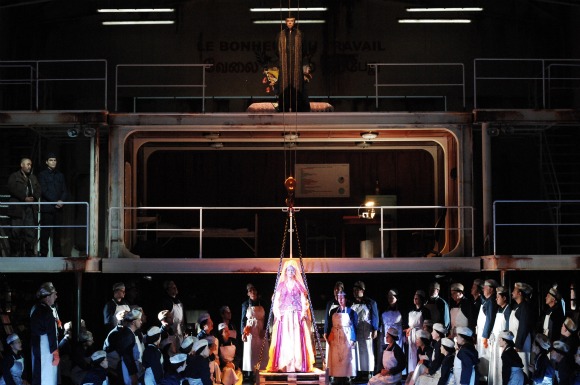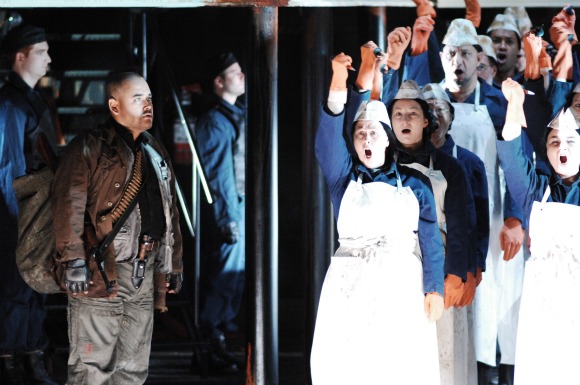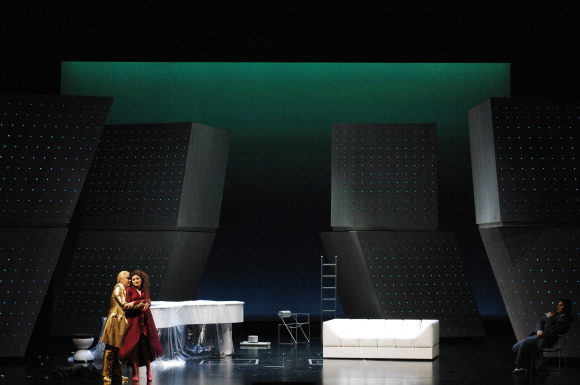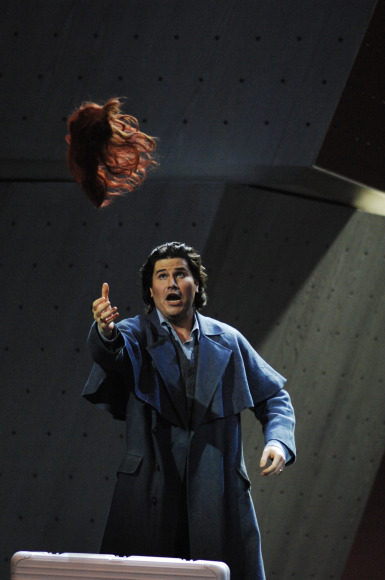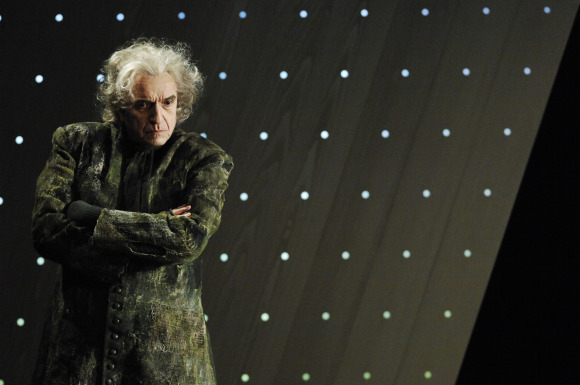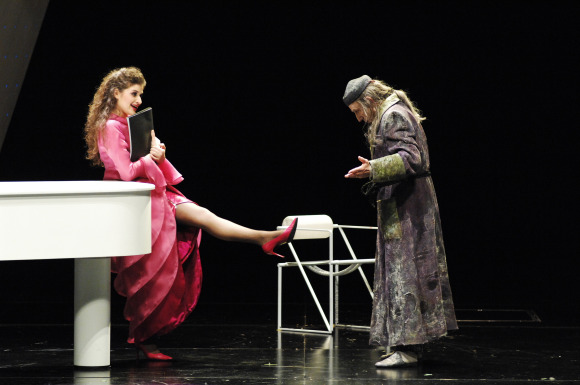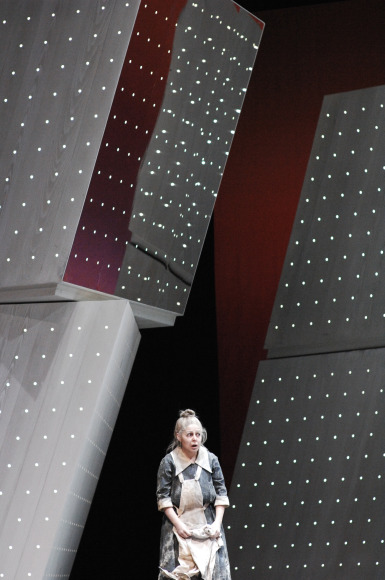When you go to see an opera, and especially when you have booked a nice seat, you try to have a good sleep the night before, as much as possible.
In a small space with a seating capacity of 1100, such as Zurich Opera House, the distance towards the stage is not that far. Unless your seat is close to the ceiling, as the acoustics of this opera house is very good, you need proper physical strength as well to receive the impact of real elite human being performers.
However, I also enjoy the footwork of dropping in the opera house by reserving a seat online if still available, when I am feeling good and have enough time. Unless it is premiere or a premium seat, I believe wearing an outfit that is not so fancy is acceptable to your neighbors. As far as you feel comfortable, that’s all matters. In such a manner, by keeping your shoulders relaxed, you can enjoy just like the time warp into the extraordinary world of opera.
A good friend of mine from Japan came here. She was well versed in plays and Kabuki. One of her goals of this trip was, of course, to see an opera. Luckily I found out that “Les pêcheurs de perles (The Peal Fishers)” by Bize would be showing when she came.
Having won the “Roma Prize” which was the gateway to success for French artists, Bize returned to Paris from Italy. This work was written when he was 25 years old. Soon after the premier of “Carmen” that was performed in about 10 years after his return, he died of illness at the young age of 36. Having established an important position in the opera world and his great talent that could have changed the history was suddenly gone. There is no doubt that if any opera piece had been created after “Carmen,” how wonderful the opera world would have been.
Although he was not prolific, probably due to his low number of pieces known in opera, the size and the composition of “Pearl Fishers” is quite often compared with those of “Carmen.”
It is said that “The Peal Fishers” has been transformed quite dramatically after Beze’s death, and this piece is still continuously developing with changing details by many unique directions.
Although Carlo Rizzi, the conductor, defines that “Carmen” is a more sensual and exciting dynamic opera with full of life, he says;
“When Bize wrote the ‘Pearl Fisher,’ he was not really debuted yet in that era. He was young, and because of his youth, I believe, this piece has a sense of purity or transparency. The story is very simple and easy to understand. Anyway, the melody of each piece of music is clear and very beautiful.”
It was the latter part of the 19th century France. While the popularity of Italian opera was still dominant, it was an epoch when a “French opera” was born, which gave a new trend to the world of opera.
I wonder such a historical backdrop has affected the story.
The director was Daniel Herzog, who was known for his strong dramatic impression. He captured with a little storng social nature.
Although the scenic art or the lightings of Zurich Opera House quite often incorporate some devices that surprise the audience, no complicated structures were found this time, probably due to the easy-to-understand story.
The scene was a beach in ancient Ceylon.
The stage did not move much. It was structured in 3 layers from the very beginning.
According to the previously mentioned , “First of all, look at the very bottom. Here you see the peal fishers all lined up, and this is the sympol of laborers. The middle is the middle-class, and the very top layer with a run-down monastery is the top of the system of the ‘Pearl Fishers’ world.”
Also in order to clarify such a structure, the pearl fishers remained on the stage.
Tens of pearl fishers stayed there all the time, by moving their hands wearing orange color gloves all together, which dragged weirdness of the power of a mass.
Baritone Franco Pomponi played Zurga, the newly chosen head of the pearl fishers, while Nadir, his childhood friend, who once had loved the same womanand had conflict with him, was performed by tenor Javier Camarena.
The priestess Leila, once was a lover of Nadir but sent here to the beach to pray for the safety of the pearl fishers, was performed by soprano Malin Hartelius.
Bass Pavel Daniluk played Nourabad, the Brahman high priest who brought Leila.
The priestess Leila was asked by Zurga never to remove the veil and to remain virgin, only to pray for the safety of the pearl fishers.
However, by listening to Leila’s voice, Nadir realized “That’s her,” and both of them recognized each other.
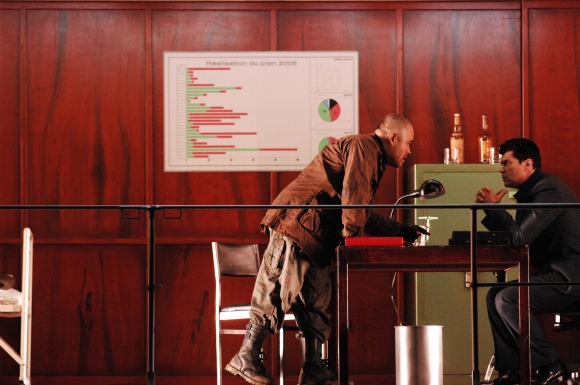
Famous pieces of music were sung one after another: arias, duets and terzettos.
Reunion with an old friend, then the duet “fond du temple saint (From the depth of the holy temple)” sung by Camarena and Franco Pomponi, praising their friendship since there would be no lover who had brought conflict between them, was truly beautiful.
The most well known piece is, of course, “Je crois entendre encore” which Nadir sang thinking of Leila. While Camarena is one of the most popular singers in Zirich Opera House, when the first phrase of this song started to give a little bit lonely tune, I felt so romantic that I was wrapped in the softness as if someone was taking me to somewhere. Although he was from Mexico, he had some oriental feeling and sang his love for Leila, expressing the liberty of a young man who had been away from the village for a long time.
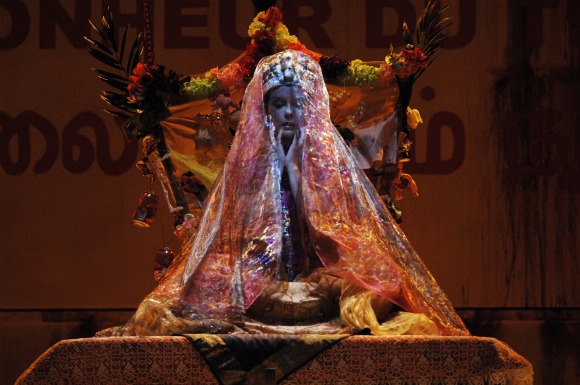
The soprano of the priestess Leila was almost divine-like. Nobleness was incorporated into the transparency of the melodies that Carlo Rizzi, the conductor, repeatedly emphasized.
Especially, the aria “Dans le ciel sansa voiles” was wonderful, following “, divin Brahma!”, that resounded from the top of the stage by Leila with her veil on, at the last scene of Act I.
The fact that Leila and Nadir were in love again was revealed to Nourabad by the guards, and they were condemned to death.
Leila begged Zurga to spear Nadir. When Zurga realized that the priestess was actually Leila, Zorga told her about his love, but could not change Leila’s feelings. Out of jealousy, Zurga condemned them for execution.
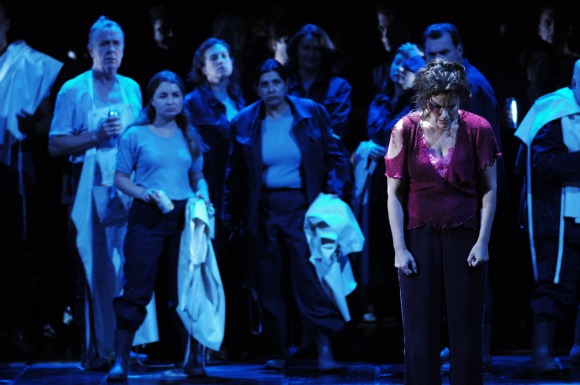
Leila said, “If I am to be killed, please take this to my mother,” revealing her pearl necklace. That was the give he left with the girl who rescued him by risking her life when he was on the run.
Zurga lit the fire in the village, and he decided to let them go during the villagers were in chaos. The song sung before this scene, another famous terzetto, “O lumiere sainte” was sung by these three characters, and their voices rolledin and out like waves, filling the opera house with the dramatic mithgy ocean.
At the end, the villagers killed Zurga. Nadir and Leila disappeared into the light. The story ended that the authority was brought down by the people, and despite the hesitation in religion, love shone at the very end. As the story was easy to understand, I was able to enjoy beautiful and rich singing voices comfortably, without fiercely following the subtitles.
That night, the melodies of the arias were echoing deep in my ears throughout the night.
Photo: © Suzanne Schwiertz
003
http://www.opernhaus.ch/
Leave a Reply
It was 5 years ago when I saw the opera at the Opernhause Zurich for the first time. The ticket was given to me by one of the Opernhause support members. Quite often, members of such group or Opernhouse fans give away their tickets/seats to some acquaintances, for example, when they cannot make the performances due to travels, etc.
“Do you know Nello Santi? Even if this opera may bore you, I believe it still well worth seeing just Santi as the conductor.”
Right behind the orchestra pit. Center in the first row.
He had sort of supernatural appearance with dignity that I had never seen before. The big body slowly walked to the conductor’s podium from the wing of the stage. When he stood up there and turned around, a big roar of “Maestro!!” was heard and the sound of clapping hands echoed in the whole opera house. Santi’s face was right in front of me.
Born in 1931 in Italy, 78 years old. No adjectives such as old and mature will fit at all to describe him. He is one of the best contemporary conductors in the world, capable of creating strong, sensitive and lyrical music.
While he performed in Opernhause Zurich as a conductor in 1958 for the first time, even with the change of music directions as the time went by, Santi has been and still is the proud existence of this opera house. He regularly performs with NHK Symphony Orchestra in Japan.
The music Santi created and the ultimate aura he brought about became a magic to me, and I was unspeakably shocked that night.
This maestro Santi conducted “Il barbiere di Siviglia” by Gioachino Rossini, which was one of the most outstanding and talked-about operas this year at the Opernhause Zurich.
With the bold idea by Mr. Pereira, General Manager, for the “Il barbiere di Siviglia” this time, Italian star architest, Mario Botta from Ticino of Italian-speaking part of Switzerland, was in charge of the scenic art. The producer was shrewd Cesare Lievi. While it was a unique collaboration, it was a great production of performers with big name veteran singers as well as young able ones.
It was early 19th century in Siviglia, Spain.
The neighborhood factotum, barber Figaro succeeds in making the love bear fruit between the young beauty, confined in the house of the guardian doctor, and the count. Figaro somehow manages to come through by various witty ideas against conspiracies or sadistic and persistent interferences by the guardian, and the couple ends up being happily married finally. This is an opera buffa and well known as an ironic comedy.
Massimo Cavalletti, as Figaro showed a thorough bright star quality.
Doctor Bartolo who plotted a marriage after the money of Rosina who was a bird in a cage, was played by Carlos Chausson. Basilio, a music teach who courted him, was performed by Ruggero Raimondi who played a villain with real fierce expression. The singing and performances by these two great veterans sparked like oxidized silver and brought about certain dignity to this high-quality comedy by Rossini.
Lievi, the producer, says, “I have tried to express how this story is irrational. Life is irrational. The theme is love, and very special love.”
Count Almaviva, who tried to confirm the love of Rosina by lying about his identity, was played by Mario Zeffiri. He appeared in front of Rosina in ever-changing disguise, sometimes as a soliver, or a music teacher in other times and so on.
Lady Rosina was played by Serena Malfi of mezzo-soprano, who made her debut in this stage for the Opernhause Zurich. She was cute and smart contemporary young woman. She even went a head of the wisdom of Figaro trying to lead their love into fruition by fighting against the spite of the guardian. A bit whimsical but honest. She loved the Count Almaviva who was in disguise as a poor student.
Lievi continues, “Almaviva is in love. He enjoys fiction and loves amorous adventures. He loves possessing a woman. However, whether he really loves her or not, I don’t know.”
I heard that he consulted with the designer so that the costumes would be largely separated into 2 parts; for very old people and for the young.
Although this comedy was based on the conflict between generations and concepts of values, as well as those between aristocrats and commoners, it also tried to express the conflict by way of costumes.
Although it is assumed that the barber Figaro could have had lots of chances to achieve a successful career in that age judging from his sharp mind, his character showed that he was indifferent to such a matter. While he domonstrated light and easy performance and made us enjoy his singing with his active role, he had the coolest vision among all the characters. Favorable impressions of popular familiarity and artfulness owed a lot to the character of Cavalletti.
Also Rebeca Olvera, who played the role of the servant Berta who was always sneezing, enchanted us with her beautiful soprano aria. Even though she belonged to the “old people” with her old servant role, her skillful acting of easygoing stupid personality played a role of sophisticated spice in the whole story.
Well, the stage design by Mario Botta brought pros and cons for the audience as well as the media. I thought it was an audacious challenge and interesting, typically this opera house, however, the newspaper criticized quite harshly.
Botta says that the city of Zurich itself is an interesting target.
“Zurich is a very modern city with strong influence of contemporary art. While graphic art and modern art have brought various aesthetic consciousness to this town, we have brought ““Il barbiere di Siviglia” in the art world in the second part of the 20th century.”
Although he has designed the ballet stage of this opera house twice, it was his first time for an opera.
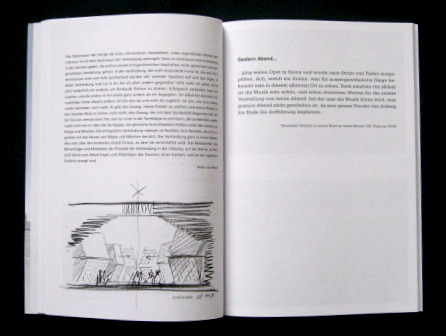
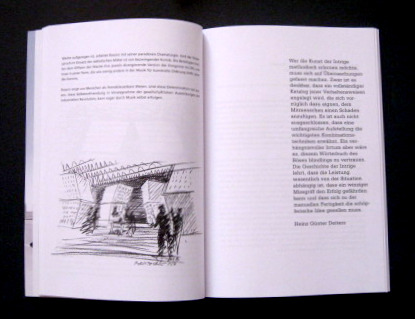
Four metal-grey double cubic moved around the stage as the story went on, by changing lights or showing movies or mirrors on the screen.
Also the trunk that the factotum barber Figaro carried was his shop itself that opened up anywhere. Scissors, wigs, the limb, or even a giraffe with somehow ever-extending neck appeared as well. The number 15 was written large, and it was assumed that the address wherever he opened up his shop was 15.
Somehow, I recalled the Japanese movie “Futen-no Tora.”
Let’s go back to the story of Botta.
“There is a huge difference between architecture and stage. Always unique spaces or places are created in architecture. Stages are totally different, and designing rooms is not the task. However, I must have the audience dream a dream. Performing the imagination of the audience is the major role.”
Curtain calls continued and Nello Santi also came up to the stage. I heard that he could play any musical instruments of the orchestra, and he played whispering cembalo this time.
“Rossini Crescendo” that Santi expressed turned out to be a poetic and elegant work where music expressed laughter, humor and irony, just like Rossini tailored this comedy of high quality.
The maestro bowed his head deeper than anybody else, and then slowly looked around the audience with a gentle smile.
Stage Photo: Opernhaus Zürich/ Suzanne Schwiertz
http://www.opernhaus.ch
